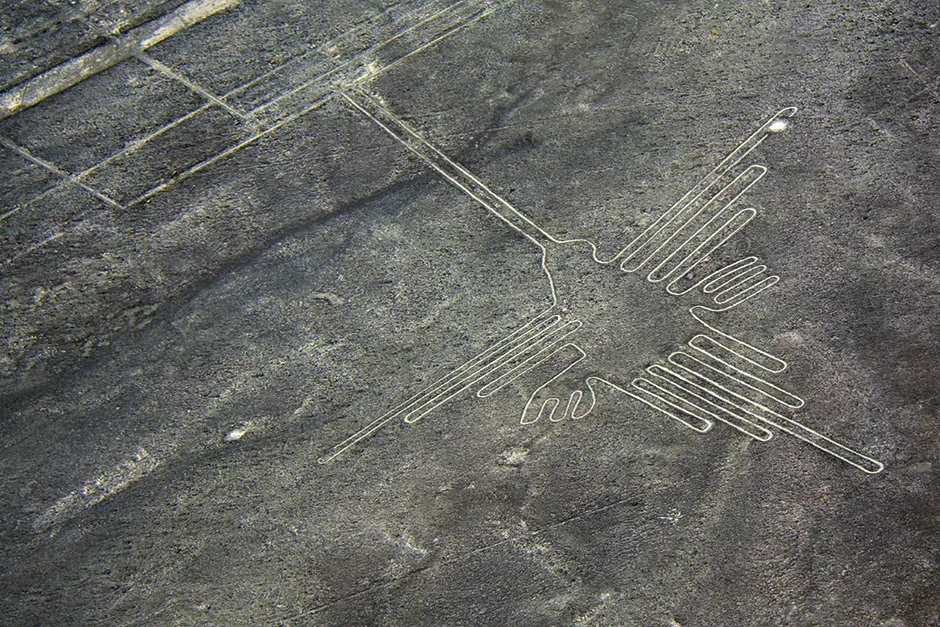Out of nowhere, an incandescent light dazzles a young woman. After her eyes adjust to the brightness, they widen in fear as a small grey figure emerges…
Several weeks later, the woman is pregnant. There has been no physical conception but the pregnancy dates back to that strange event. At night, shards of memory interrupt her dreams. They are of a strange being not from this Earth.
It’s not just sci-fi fans who will recognise this scenario. One of history’s most famous stories also features an otherworldly being mysteriously impregnating a young woman.
In the Bible, over 2,000 years ago, the angelic visitation resulted in the birth of Christianity. Today, there are plenty of people who view the existence of extraterrestrials not just as a matter of belief, but also akin to a religion. There’s even a scientific link between the two.
Read more about UFOs:
- 4 mysterious UFO sightings that are still unexplained
- Conspiracies and FBI secrets: Why we love UFOs
Aliens vs religion
Andrew Abeyta, assistant professor of psychology at North Dakota State University in the United States, studies the meaning of life. In 2017, he was co-author of a study called ‘We are not alone’, which found that people who believe in aliens are less likely to believe in religion.
“Religion is a really robust source of meaning in life. It gives us a sense of purpose. We feel important. It feels like our lives are planned, that they’re purposefully designed,” says Abeyta. “And when we reject religion, what we argue is that need to explain, that need to find purpose, that desire to feel important and meaningfulness doesn’t go away.
"People who tend to report a stronger belief in UFO conspiracies and little green men and things like that, tend to also report a higher sense of meaning in life. They want to go somewhere else to help restore that meaning. So it’s sort of like we’re trying to capture this compensatory process.”
This doesn’t necessarily mean that anyone who leaves the church will start believing in alien abduction. But it does demonstrate a common human desire for answers to an age-old question: “Why are we here?”
Research by the University of Fribourg found that those who believe in a higher purpose, the literal truth of the Bible and divine creation, were also more likely to believe in conspiracy theories.
“Belief in conspiracy theories does tend to correlate with religious belief,” says Karen Douglas, professor of social psychology at the University of Kent. “It also correlates negatively with education. For instance, people who are more educated are more likely to reject conspiracy theories. Some studies have also shown that disadvantaged groups are sometimes more likely to believe in conspiracy theories.”
Read more about aliens:
- Alien life in our Solar System: 5 best places to look
- What do aliens look like? Animals on Earth may hold the answer
Desire for escapism
The desire for escapism through conspiracy theories is understandable. And in some countries, conspiracy theories are extremely prevalent. In January 2020, an Ipsos poll in the US found that almost one in two Americans think that UFOs exist and have already visited the Earth. The study came out before the pandemic took hold. Since then, many people are more anxious and uncertain about the future. If the survey was repeated today, would figures go up?
“Conspiracy theories do tend to thrive in times of crisis,” says Douglas. “When people feel isolated and frustrated, they might be more inclined to turn to conspiracy theories in an attempt to make themselves feel better.”
How memories influence our expectations
The problem with conspiracy theories – whether aliens, 5G masts or vaccines – is that people can also write off a logical explanation as part of the conspiracy.
“People are most susceptible when important psychological needs are not being satisfied,” says Douglas. “Specifically, people need knowledge and certainty, to feel safe, secure and in control, and to feel good about themselves and the groups they belong to. When people are not fulfilled by official or conventional explanations for events, conspiracy theories might seem appealing.”
The most famous UFO conspiracy theory demonstrates this. In July 1947, not long after WWII, which had removed certainty in most people’s lives, the Roswell Army Air Field (RAAF) recovered debris from a crashed high altitude weather balloon in Roswell, New Mexico. At least, that was the official story. The Roswell Daily Record front page reported it somewhat differently: “RAAF captures flying saucer on ranch in Roswell region”.
The conspiracy that launched a global industry of books, TV series and movies involved a spacecraft and recovered alien bodies. It continues to this day. In 1994, even though the craft was confirmed as a weather balloon as part of the military’s secret Project Mogul, people continue to believe the balloon was a UFO and that its wreckage, and the preserved body of an alien, is hidden somewhere in the Nevada military base, Area 51.

Psychologist Chris French is not surprised. “The important thing is prior belief and then what we call top-down processing,” says the emeritus professor at Goldsmiths, University of London, and former editor of The Skeptic magazine. “It’s the way that your beliefs and expectations can shape what you actually perceive.”
A case in point is the common description of UFOs as ‘flying saucers’. The phrase originated just a few weeks before the Roswell incident when businessman and amateur pilot Kenneth Arnold reported, after a private flight, nine unusual craft moving at speeds far greater than any available technology.
“One of the really interesting things is that when he talked about a saucer, he wasn’t talking about the shape of the craft at all,” says French. “He described the motion as being like a saucer skipping across water. But this phrase ‘flying saucer’ was loved by the media.
"He even drew what he saw at the time – it looks more like a boomerang than a saucer. But what did people then start to report seeing after that? Saucer-shaped craft. It’s a lovely example of the influence of top-down processing.”
If somebody believes in UFOs, that person is then more likely to believe a light in the sky is a flying saucer and either see or recall features of a physical craft than a non-believer. Reliability of memory too is at play.
“Someone maybe is trying to be as honest and sincere as they can possibly be, but they may well end up adding in details of things that perhaps were not, in fact, really there,” says French. “So it’s those basic kind of psychological biases that can often come into play here.”
False memory experiments reveal how easily people can be mistaken. One commonly used test features a list of associated words. French provides a simple example: snooze, snore, dream, nap, bed, blankets. “All these words are closely related to sleep,” he says. “When we test memory afterwards quite a lot people will report the word ‘sleep’ – even though it wasn’t presented.”
Fear, nightmares and alien encounters
Research into memory and alien abduction at Harvard University also sheds light on human susceptibility.
A 2002 study led by Prof Susan Clancy compared three groups: one with conscious memories of an abduction; a second who believed they’d been abducted but couldn’t remember it; and a third group with no such claims. The experiment found that the first group of people were more susceptible to false memories. The people who didn’t believe they’d been abducted were the least susceptible.
It is a reminder of the power of the mind and the psychological human desire to believe in something. “What you’ve got there are people who are interpreting various things in their lives, that they can’t explain, as being down to alien abduction,” says French.
There are other theories for belief in aliens. There is ongoing research into whether some of those with alien abduction claims may have experienced childhood abuse.
Some studies have found an association with sleep paralysis, where people experience a temporary loss of muscle control either before falling asleep or after waking up and are unable to move or speak. The experience can be extremely frightening and may also be accompanied by hallucinations or feelings of suffocation.
This is believed to be the explanation for a belief in the incubus demon, which would supposedly squat on someone’s chest as they lay paralysed in fear, often sexually assaulting women. This might explain the tendency of alien abduction memories to include invasive bodily probing.
All the possible explanations reveal further insight into the human psyche. So when we have a deep-rooted need for certainty and meaning, could a pandemic fuel a rise in alien beliefs?
“Conspiracy theories tend to thrive in times of crisis,” says Douglas, “so it definitely makes sense that conspiracy theories are so visible right now. When people feel isolated and frustrated, they might be more inclined to turn to conspiracy theories in an attempt to make themselves feel better.”
Persuading people who believe in a conspiracy theory that the truth is not part of the conspiracy is, of course, another matter. “When we presented scientific information about the safety and efficacy of vaccines before presenting conspiracy theories to participants, the conspiracy theories had less impact on their attitudes about vaccinations and intentions to vaccinate,” says Douglas. Presenting the information afterwards didn’t help because the conspiracy theory “had a chance to stick”.

Considering the global phenomenon of alien contact culture, it may therefore be too late to persuade people that UFOs and aliens are not visiting us on a regular basis – from theories that the Peruvian Nazca lines were built to attract aliens, to the Star of Bethlehem being a UFO (even though the most likely explanation is that the star was a comet).
To add another layer of complexity, the lack of confirmed evidence for aliens doesn’t mean aliens don’t exist. So far over 4,000 known planets have been discovered outside our Solar System. Statistically, considering the size of our Universe, it is far more likely that there is alien life elsewhere.
In June 2020, two physicists even came up with an Alien Civilisation Calculator. It is an update of the famous 1961 Drake Equation for calculating the number of extraterrestrial intelligences in the Galaxy. The new calculator came up with a very specific amount. The answer was 36.
Just six short of a number that would have delighted fans of The Hitchhiker’s Guide To The Galaxy, because then we would have returned full circle to humanity’s psychological desire to understand the meaning of life. And this time, we’d have an answer.
- This article first appeared inissue 357ofBBC Science Focus Magazine–find out how to subscribe here
Enter theBBC Science Focus draw an alien competition by 5 January 2021 for a chance to win a bundle of Dara Ó Briain's science books.
